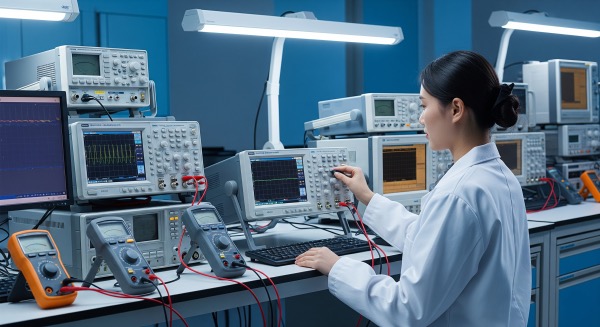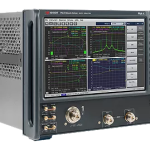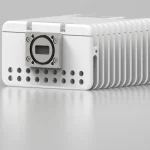Picture this: you’re running critical measurements for a major project when your spectrum analyzer starts showing inconsistent readings. The deadline’s tomorrow, and you suddenly realize it’s been 18 months since your last calibration. Sound familiar?
Whether you’re managing electrical test equipment in a production facility or overseeing environmental testing chambers in a research lab, proper calibration isn’t just a checkbox on your maintenance schedule—it’s the foundation of reliable measurements and regulatory compliance.
Why Test Equipment Calibration Matters More Than Ever
In today’s precision-driven industries, even minor measurement errors can cascade into major problems. According to ISO/IEC 17025 standards, calibration directly impacts data integrity, product quality, and safety outcomes. When your spectrum analyzers and signal analyzers drift out of spec, you risk everything from failed audits to compromised research results.
The reality is stark: test equipment naturally degrades over time. Electronic components age, mechanical parts wear, and environmental factors like temperature fluctuations and humidity take their toll. A recent industry study found that measurement devices can drift significantly within just six months of use, especially in harsh industrial environments.
Understanding Different Types of Test Equipment Calibration
Electrical Test and Power Analyzers Calibration
Your multimeters, oscilloscopes, and power analyzers form the backbone of electrical testing operations. These instruments require specialized calibration procedures that verify performance across multiple parameters—voltage, current, resistance, and frequency ranges.
The calibration process for electrical test equipment typically involves comparing your device against reference standards that are at least four times more accurate. Modern calibration labs use sophisticated multifunction electrical tester calibrators that can complete comprehensive testing in as little as 15 minutes, compared to the hour-long manual processes of the past.
Environmental Testing Equipment Requirements
Environmental chambers present unique calibration challenges. These systems must maintain precise temperature, humidity, and pressure conditions across extended test periods. ASTM D4332 standards outline specific requirements for environmental conditioning equipment, emphasizing the critical nature of simulating real-world distribution environments.
When calibrating environmental testing chambers, technicians must verify multiple zones and ensure uniform conditions throughout the testing space. This includes checking temperature gradients, humidity control accuracy, and the responsiveness of control systems—all while maintaining traceability to national standards.
Spectrum and Signal Analyzer Calibration Specifics
RF test equipment demands perhaps the most rigorous calibration attention. Modern spectrum analyzers operate across frequencies from 2 Hz to 85 GHz, with bandwidths exceeding 1 GHz for 5G and radar applications. At these frequencies, even short cables can introduce significant losses, making receiver system calibration essential.
The traditional approach required multiple instruments—a vector network analyzer, signal generator, power sensor, and power meter. Today’s receiver calibrators streamline this process, combining scalar and vector calibration in a single device that connects via USB and automatically generates correction data.
Best Practices for Test Equipment Calibration Frequency
So how often should you calibrate? While manufacturers provide baseline recommendations, the real answer depends on several critical factors:
Usage intensity plays a major role. Equipment used daily in production environments needs more frequent calibration than instruments reserved for occasional spot checks. For amplifiers and RF equipment, heavy use can accelerate drift rates significantly.
Environmental conditions also matter. Test equipment operating in temperature extremes, high humidity, or areas with vibration may require quarterly rather than annual calibration. The National Institute of Standards and Technology recommends monitoring your specific environment and adjusting intervals accordingly.
Criticality of measurements should drive your decisions. If you’re performing compliance testing for medical devices or aerospace components, monthly verification checks between annual calibrations provide an extra safety margin. For general-purpose measurements, annual calibration typically suffices.
Creating an Effective Calibration Management Program
Building a robust calibration program starts with comprehensive documentation. Track every instrument’s calibration history, including as-found and as-left readings, environmental conditions during calibration, and any adjustments made. This data becomes invaluable for identifying trends and optimizing calibration intervals.
Consider implementing intermediate checks between formal calibrations. Using known reference standards or fixed resistor banks, you can verify your meters maintain accuracy throughout their calibration cycle. Document these checks carefully—they often satisfy audit requirements from certification bodies like NICEIC and NAPIT.
Modern calibration management software can automate scheduling, track certificates, and alert you before instruments go out of calibration. This proactive approach prevents the nightmare scenario of discovering expired calibrations during an audit or critical project.
Choosing Between In-House and External Calibration Services
The decision between internal and external calibration depends on your organization’s size, technical capabilities, and equipment variety. In-house calibration offers immediate availability and lower per-unit costs for high-volume operations. However, it requires significant investment in reference standards, trained personnel, and controlled environments.
External calibration through ISO/IEC 17025 accredited laboratories provides several advantages. These facilities maintain the highest-grade reference standards, employ specialized technicians, and offer legal defensibility for regulatory compliance. Many labs now offer on-site calibration services, bringing accredited capabilities directly to your facility.
For critical applications, consider a hybrid approach. Maintain basic calibration capabilities for routine checks and pre-project verification, while relying on accredited labs for annual certifications and complex instruments like network analyzers.
The Hidden Costs of Skipping Calibration
While calibration represents a direct expense, the costs of neglecting it far exceed any savings. Consider these real-world consequences:
Production losses from inaccurate measurements can quickly spiral. One manufacturer discovered their uncalibrated power analyzers had been passing defective units for months, resulting in massive recalls and warranty claims.
Regulatory penalties hit hard. FDA citations for inadequate calibration programs can halt production lines and trigger extensive remediation requirements. Similarly, ISO audit failures jeopardize certifications essential for market access.
Safety risks present the gravest concern. Electrical safety analyzers protecting workers from shock hazards must maintain absolute accuracy. Environmental chambers testing medical device sterility barriers cannot afford temperature control failures.
Future-Proofing Your Calibration Strategy
As test equipment grows more sophisticated, calibration requirements evolve accordingly. Modern instruments often include self-diagnostic capabilities and drift compensation algorithms. However, these features complement rather than replace formal calibration.
The trend toward automated calibration promises significant efficiency gains. Instruments that can self-calibrate against internal references or communicate directly with calibration management systems reduce downtime and human error. Still, periodic verification against external standards remains essential for maintaining measurement traceability.
Cloud-based calibration data management enables real-time visibility across multiple facilities. Technicians can access calibration histories, download certificates, and verify instrument status from any location. This connectivity proves especially valuable for organizations managing distributed test equipment assets.
Taking Action on Your Calibration Program
Don’t wait for a measurement crisis or failed audit to address calibration gaps. Start by auditing your current program:
- Inventory all test equipment requiring calibration
- Review manufacturer recommendations and regulatory requirements
- Assess your measurement criticality and risk factors
- Develop written calibration procedures and intervals
- Implement tracking systems and schedule reminders
- Train personnel on proper handling and interim checks
Remember, calibration isn’t just about compliance—it’s about confidence in every measurement you make. Whether you’re qualifying data acquisition systems for a new product line or ensuring your temperature and humidity chambers maintain validated conditions, proper calibration forms the foundation of quality and safety.
FAQs About Test Equipment Calibration
Q: What happens if I use test equipment that’s out of calibration? A: Using uncalibrated equipment risks inaccurate measurements, potentially leading to defective products, safety hazards, regulatory violations, and legal liability. Any data collected may be considered invalid for quality or compliance purposes.
Q: Can I extend calibration intervals if my equipment passes consistently? A: Yes, with proper documentation. If historical calibration data shows minimal drift over multiple cycles, you may justify extending intervals. However, always consider manufacturer recommendations and regulatory requirements before making changes.
Q: Do I need NIST-traceable calibration for all equipment? A: While not always legally required, NIST traceability provides the strongest measurement assurance. Most quality standards and regulatory frameworks expect traceability to national or international standards for critical measurements.
Q: How do I know if my calibration provider is qualified? A: Look for ISO/IEC 17025 accreditation from recognized bodies like A2LA. Verify their scope covers your specific equipment types and measurement ranges. Request sample certificates and check their measurement uncertainty calculations.
Q: What’s the difference between calibration and verification? A: Calibration determines measurement error and may include adjustments to correct it. Verification simply confirms whether equipment meets specifications without making adjustments. Some standards require calibration while others accept verification.


